#nellie in europe
Text
my heart has been. ripped out. oh my god. i’m so. that was so. i’m. i. i cant put into words what that was like. les mis london i’m kissing you with tongue.
#HHHHHHHHHHHHHHHH#nellie in europe#i want to see it again before i leave#i NEED to see it again before i leave
14 notes
·
View notes
Text
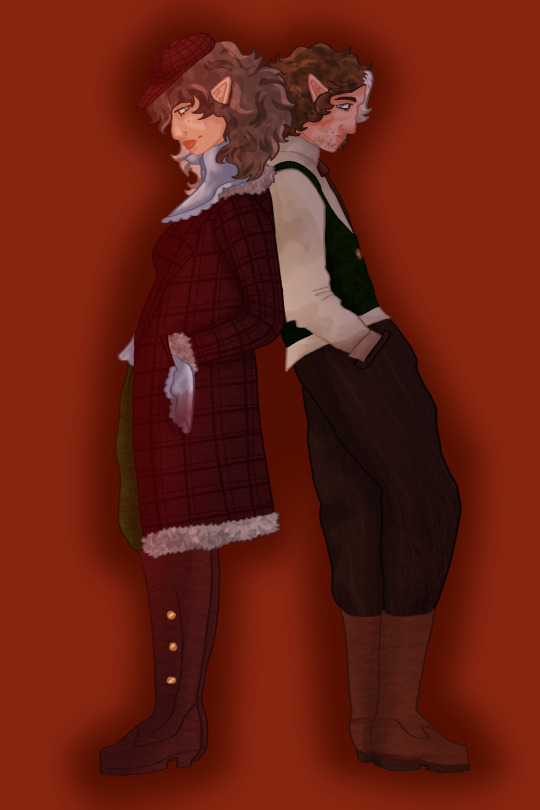
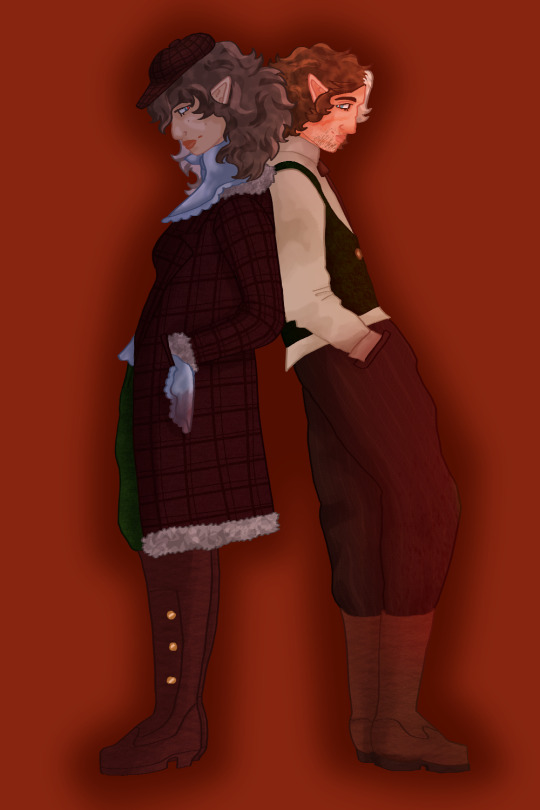
ok. tragically separated wwi era vampire twins.


#seabirds.txt#seabirds.art#mystery twins#gemeos do misterio#q!bagi#q!cellbit#qsmp#i did research 1920s era clothing for this but i based a lot of it off of their mc skins.#cellbit is a sailor turned vampire who ended up in europe during wwi after fighting naval battles at sea and never came home#bagi becomes a journalist to find him and stumbles across vampires along the way not realizing he had become a vampire too#design notes: this all started off of bagi's newsboy cap which was popular in the 1920s with working men. i put her in men's pants because#wanted to give this energy of working a job traditionally not worked by women at the time. <- women started campaigning to work as#journalists notably around the late 1800s and early 1900s (at least in the us and some european countries (couldnt find info on brazil))#i was thinking of nellie bly when thinking of what bagi would be doing in this au! she also has a bandana to hide her neck where her vampir#bite would be and a hanky for blood clean up. perhaps something from home. cellbit is not concerned with hiding his own neck. he's just#wearing a dress shirt LOL. i feel like cellbit would be fully embracing his vampiric tendencies at this point and a part of more vampire#society than human while for bagi it would be the other way around (she's still looking for him in the human world using vampire resources)#that is why he is so bloodstained. i feel like in his free time he would be freelancing detective work for other vampires maybe to gather u#favors or something similar. he's a little bit fancy because of this but still casual enough that there's no suit involved.
50 notes
·
View notes
Text

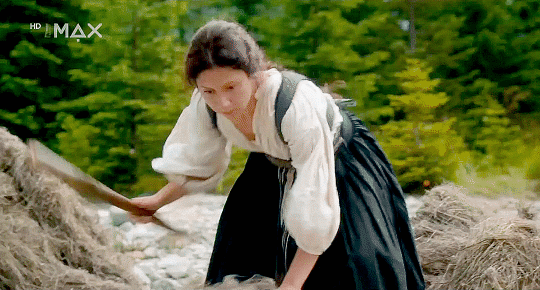
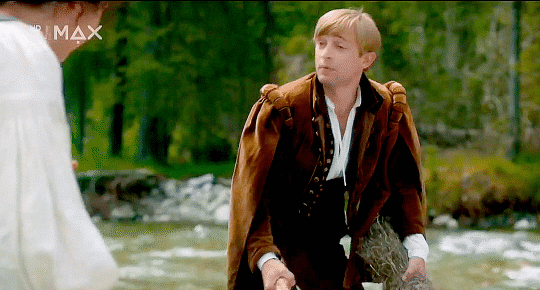
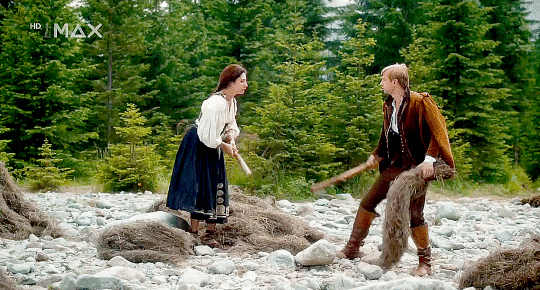
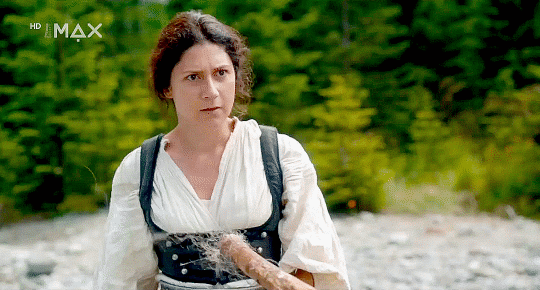
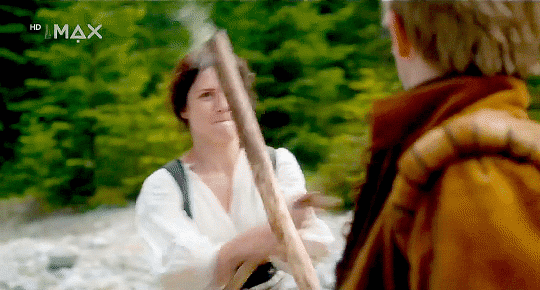
Martha Issová and Lukáš Příkazký in
The Seven Ravens (Sedmero krkavců)
2015, dir. Alice Nellis IMDB
#Czech#čumblr#Czech cinema#Czech film#Martha Issová#Lukáš Příkazký#The Seven Ravens#Sedmero krkavců#Alice Nellis#Božena Němcová#film#film edit#fantasy#fairy tale#comedy#romance#adaptation#Czech literature#2010s#central Europe#European cinema#European film#actor#actress#Czech Republic#Czechia#Czech pop culture#gif#psychotronic film#dailyworldcinema
39 notes
·
View notes
Text
Ladies please share to spread the word about two exhibits featuring women artists in two different cities

Artemisia Gentileschi, Self Portrait as Saint Catherine of Alexandria (ca. 1615–17). Collection of the National Gallery, London.
Renaissance art calls to mind some of the greatest names in art history—Da Vinci, Raphael, Michelangelo, and Donatello, just to name a few. Lesser known, however, are the influential women artists who shaped the era.
Referring to a period that bridged the end of the Middle Ages and early Modernism, the Renaissance was marked by a widespread effort to recover and advance the accomplishments of classical antiquity. Originating in Florence, Italy, but soon spreading throughout Europe, Renaissance art saw the advent of advanced linear perspective and an increase in realism. Many women artists—famous in their own time—were among these great visionaries.
Though for centuries, these women artists were largely overlooked in the annals of art history, contemporary scholarship has begun a long overdue reappraisal and rediscovery of their lives and works. Evidence of this resurgence of interest in the women artists of the Renaissance can be seen in the two current major museum shows in the U.S. that are dedicated to just that. “Strong Women in Renaissance Italy” at the Museum of Fine Arts, Boston brings together over 100 works from the 14th through early 17th century, exploring the lives and work of Italian women artists and is on view through January 7, 2024. At the Baltimore Museum of Art, “Making Her Mark: A History of Women Artists in Europe, 1400–1800” is a sweeping exhibition that aims to rectify critical oversight and bring awareness to historical women artists, and is also on view through January 7, 2024,.
In light of these two important exhibitions, we’ve brought together a brief introduction to five Renaissance women artists whom we think you should know.
Plautilla Nelli (1524–1588)

Plautilla Nelli, St. Catherine with Lily (ca. 1550). Collection of Le Gallerie Degli Uffizi, Florence.
Plautilla Nelli was a nun of the Dominican order at the convent of St. Catherine of Siena in Florence—and is considered by many scholars to be the first-known woman artist of Renaissance Italy. A self-taught painter, Nelli led a women’s artist workshop from the convent, and she was one of the few women mentioned in Vasari’s seminal treatise Lives of the Most Excellent Painters, Sculptors, and Architects. Because she developed her practice without formal training and was forbidden from studying male nudes, Nelli frequently copied works by other artists, as well as motifs from religious texts and sculpture.

Nelli’s work recently came into the limelight for her immense painting Last Supper, dating to 1568. Measuring over 21 feet long and 6 feet high, the painting remained in her convent’s refectory until the early 19th century, before being moved to another convent’s refectory and, ultimately, being placed in storage. Following an early 20th-century restoration and several more moves, it went on view to the public for the first time in over four centuries at the Santa Maria Novella Museum in 2019. Hanging alongside other masterworks by artists like Brunelleschi, it finally is getting the widespread recognition it deserves.
Catharina van Hemessen (1528–after 1565)
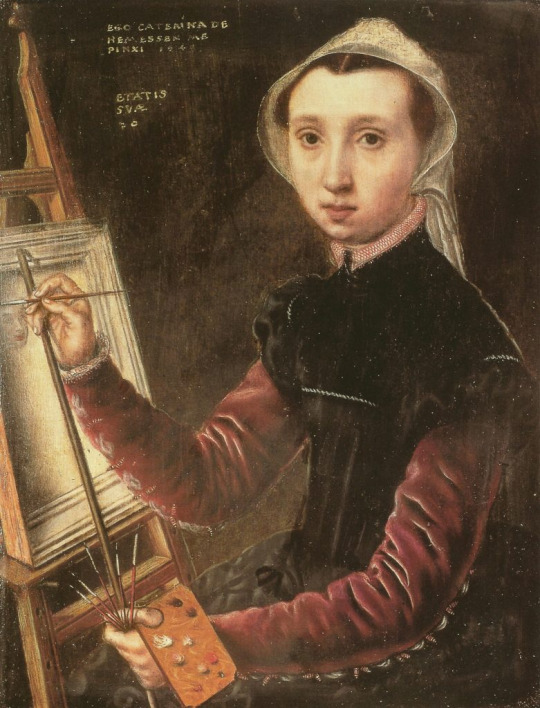
Catharina van Hemessen, Self-Portrait (1548). Collection of Kunstmuseum Basel.
Northern Renaissance painter Catharina van Hemessen was the daughter of prominent Mannerist painter Jan Sanders van Hemessen, and is the earliest Flemish woman painter with verified work that still exists today. Hailing from Antwerp, van Hemessen achieved success in her lifetime, including obtaining the patronage of Maria of Austria, regent of the Low Countries. She was included both in Vasari’s collection of artist biographies, as well as artist biographer Lodovico Guicciardini’s Description of the Low Countries (1567). Van Hemessen’s greatest claim to fame, however, is that she is attributed with completing the first known self-portrait of an artist at their easel—a compositional approach that has become a pillar of the art historical canon, as it has been taken up by artists ranging from Rembrandt van Rijn to Norman Rockwell.
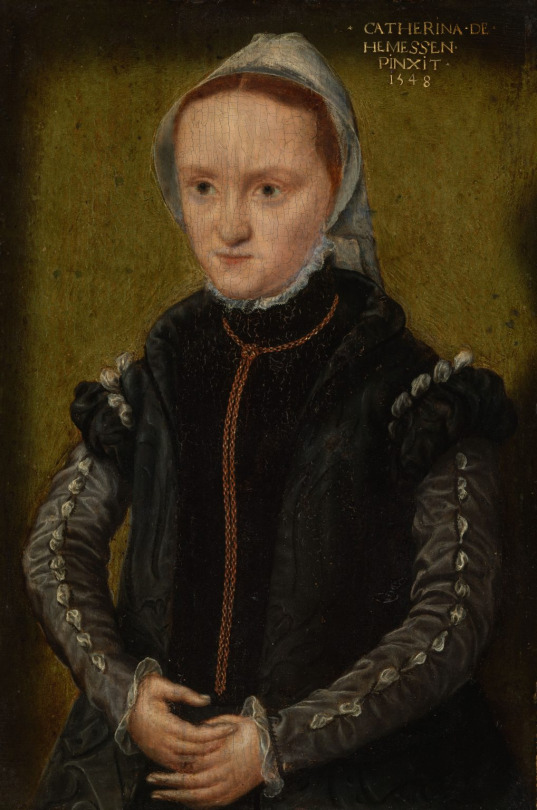
Though she created religious images, she was most well known as a portraitist. Eight portraits and two religious compositions signed by van Hemessen have survived, dating between 1548 and 1552. Notably, there are no verifiable works dating to later than 1554, which have led scholars to believe she ceased painting following her marriage to organist Christian de Morien that year—though there are records she continued to teach three male apprentices.
Sofonisba Anguissola (ca. 1532–1625)
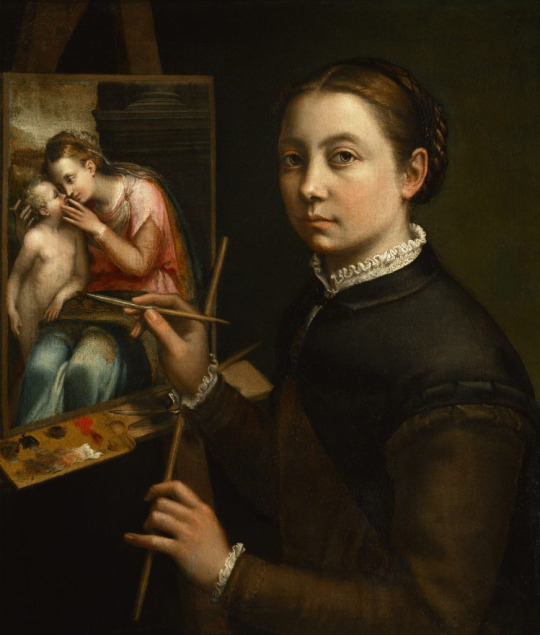
Sofonisba Anguissola, Self-portrait (ca. 1535–1625). Collection of Łańcut Castle Museum, Poland.
Sofonisba Anguissola was one of the most successful women artists of the Renaissance, with a reputation that rose to international acclaim in her lifetime. Born into a noble Milanese family, Anguissola was able to pursue her artistic aspirations with the support of her family, and began her formal training as a teenager; first apprenticing with Bernardino Campi for three years before working with Bernardino Gatti. Her position also allowed for her to become acquainted with Michelangelo, whom she exchanged drawings with. Her early career saw her complete numerous self-portraits as well as portraits of her sisters, including The Game of Chess (1555), which are noted for their realism and liveliness.

Sofonisba Anguissola, The Game of Chess (ca. 1555). Collection of the National Museum in Poznań, Poland.
Anguissola’s reputation as a painter quickly spread, and she was invited to join the court of King Philip II of Spain in Madrid in approximately 1559. Throughout her 14-year tenure there, she completed many official portraits of both members of the royal family and members of the court, adopting the formal and intricate style expected—though unfortunately, no work from this period survived due to a palace fire in the 18th century. Having garnered considerable royal favor, she ultimately spent the remainder of her life continuing to paint as well as teach and engage with young, up-and-coming artists. In 1624, one such young artist by the name of Anthony van Dyck visited Anguissola and recorded his visit in a series of sketches and noted that he learned more about the principles of painting from her than from anything else he had encountered.
Lavinia Fontana (1552–1614)

Lavinia Fontana, Self-portrait at the Spinet with Maid (1577). Collection of the Accademia Nazionale di San Luca, Rome.
Trained by her artist father Prospero Fontana, a teacher at the School of Bologna, Lavinia Fontana is considered the first professional woman artist insofar as she supported herself and her family solely on the income from her commissions. Unconventional for the time, her husband acted as her agent and took a primary role in childcare for their 11 children. She began her commercial practice in her mid-twenties, creating small devotional paintings, but later began and excelled at creating portraits—and became a favorite of Bolognese noblewomen who vied for her services. Unusual for the period, she also created large-scale mythological or religious paintings that occasionally featured female nudes.

Lavinia Fontana, The Visit of the Queen of Sheba to King Solomon (1599). Collection of the National Gallery of Ireland, Dublin.
In the early years of the 17th century, she was invited to Rome at the invitation of Pope Clement VIII and was soon appointed as an official portraitist at the Vatican, counting Pope Paul V as one of her sitters. Her career success continued to thrive, as evidenced by the numerous honors she received, and the bronze portrait medallion cast in her likeness by sculptor and architect Felice Antonio Casoni. She was also one of the first women elected to the Accademia di San Luca in Rome.
Artemisia Gentileschi (1593–1653)
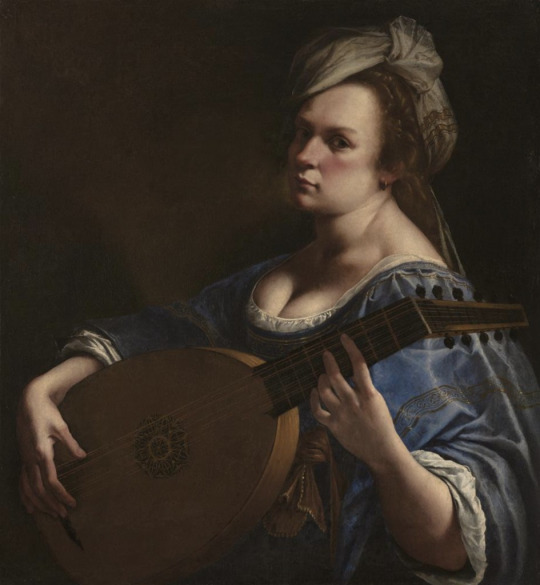
Artemisia Gentileschi, Self-portrait as a Lute Player (ca. 1615–1618). Collection of the Wadsworth Atheneum Museum of Art, Hartford.
Unlike many of her predecessors, Artemisia Gentileschi has maintained a level of renown over the centuries, with her dramatic and dynamic oeuvre that was unprecedented in her own time. Her Baroque compositions helped usher in a new era of painting. Today, her paintings draw the attention of global audiences. Born in Rome, her father was the painter Orazio Gentileschi, who trained Artemisia starting at an early age. Inspired greatly by the work of Caravaggio and his use of high-contrast compositions, her paintings garnered and maintained attention for their naturalism and nuance, as they broke from the idealism of generations past.

Artemisia Gentileschi, Judith and Her Maidservant with the Head of Holofernes (ca. 1623–1625). Collection of the Detroit Institute of Arts.
In 1612, Gentileschi relocated to Florence, which is where she first achieved major career success, including securing patronage from the House of Medici and being the first woman to attend the Accademia delle Arti del Disegno. From her oeuvre, Gentileschi has become most well-known for her self-portraits as well as religious scenes, specifically the story of Judith Beheading Holofernes—of which there are at least six known variations she completed. Gentileschi’s tendency to portray women as the protagonists of her works—and as equals to their male counterparts—made her innovative in her time and has subsequently secured her legacy as one of the most influential artists within Western art history—of either sex.
#Women in Art#Strong Women in Renaissance Italy#Museum of Fine Arts#Boston#There until January 7 2024#Making Her Mark: A History of Women Artists in Europe 1400 -1800#Baltimore Museum of Art#Plautilla Nelli (1524–1588)#Catharina van Hemessen (1528–after 1565)#Catharina van Hemessen created a whole genre in self portraits#Sofonisba Anguissola (ca. 1532–1625)#Lavinia Fontana (1552–1614)#Artemisia Gentileschi (1593–1653)
11 notes
·
View notes
Text
also arthur???? not even being funny but he hasn’t made waves since the 2019 copa america
#a very sexy assist to gabby in the final yes but still#he’s been bounced around europe and they want him over nelli????#in the bin
2 notes
·
View notes
Text
Find Me Friday: Nelly, Gabe, & Maeve!
Logo that says Reece’s Rainbow Special Needs Adoption Support in blue, below a blue & yellow paint stroke rainbow graphic with a yellow Ukrainian trident symbol on the right half.
In this series, each Friday I’m able, I want to share a different child or group of children who are available for adoption and listed through the adoption advocacy website Reece’s Rainbow. Please note, names used on…

View On WordPress
#accessible post#adoption advocacy#autism#autistic#available for adoption#available to large families#available to married couples#available to older parents#cystic fibrosis#developmental delay#disability adoption#Eastern Europe adoption#education#eyeglasses#Find Me Friday#Gabe2#intellectual disability#Maeve#medical history#nearsighted#Nelly#non-speaking#photo descriptions#Reece&039;s Rainbow#sensory hypersensitivity#therapy#waiting children
0 notes
Text
Solheim Cup 2024: Nelly Korda and the U.S. keep rolling; lead Europe 10-6
Alison Lee sparked a shirtless caddie celebration by spinning a wedge into the cup for eagle. Andrea Lee holed a bunker shot to set up Rose Zhang’s walk-off eagle one hole later. And Megan Khang paused for 10 seconds to let gravity help her out on a critical birdie putt.
The wait was worth it for the United States, which maintained a four-point lead over Europe in the Solheim Cup on…
0 notes
Text
Nelly Furtado - Maneater
2006
"Maneater" is a song by Canadian-Portugese singer Nelly Furtado from her third studio album, Loose. It was written by Furtado, Jim Beanz, and its producers Timbaland, and Danja. It's musical style and production were inspired by the Hall & Oates song of the same name and other music from the 1980s.
Outside North America, "Maneater" became one of Furtado's most popular singles, topping the charts in the UK and peaking within the top ten of the charts across much of Europe and Australia.
"Maneater" was nominated for a 2006 MTV Europe Music Award for Best Song. It was also awarded a 2007 NRJ Music Award for Best International Song. At the 2007 MTV Video Music Awards, Furtado was nominated in the category of Female Artist of the Year for "Maneater" and "Say It Right".
"Maneater" recieved a total of 68,2% yes votes!
youtube
974 notes
·
View notes
Text
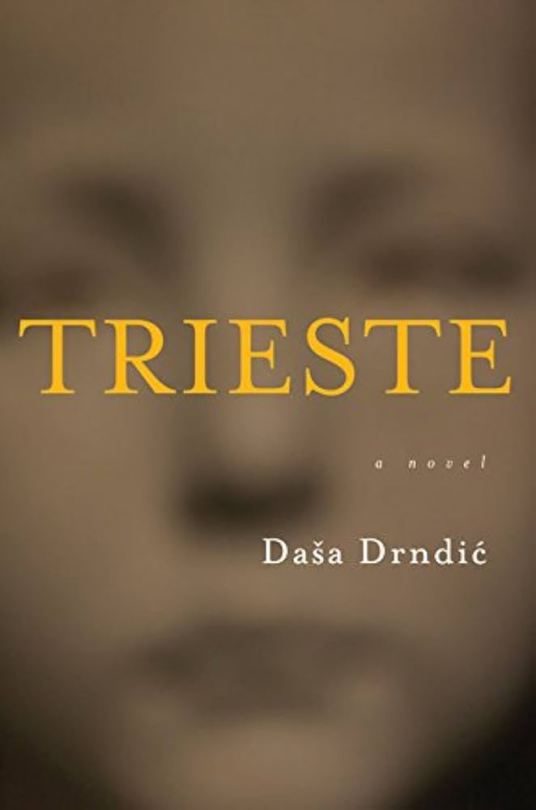
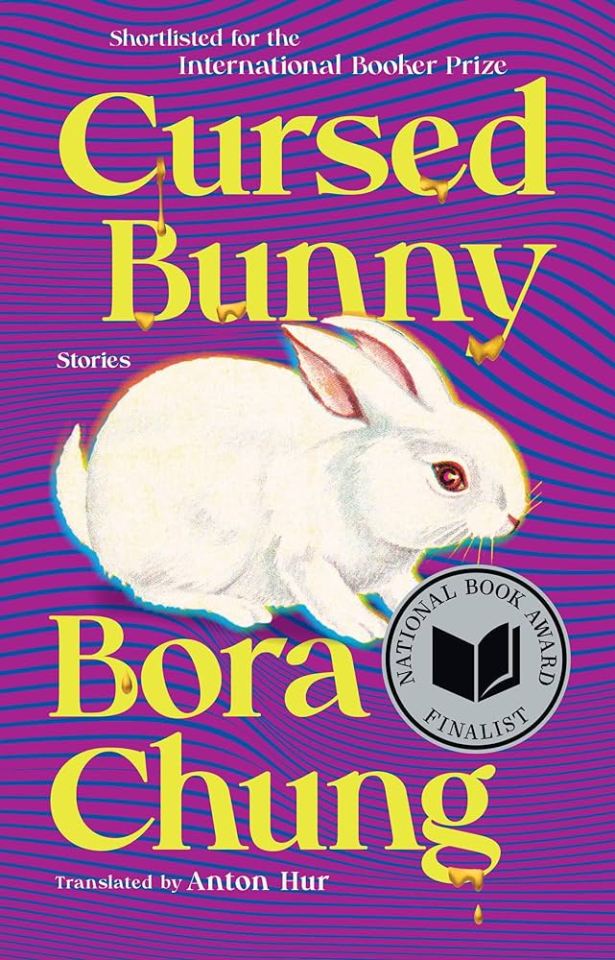
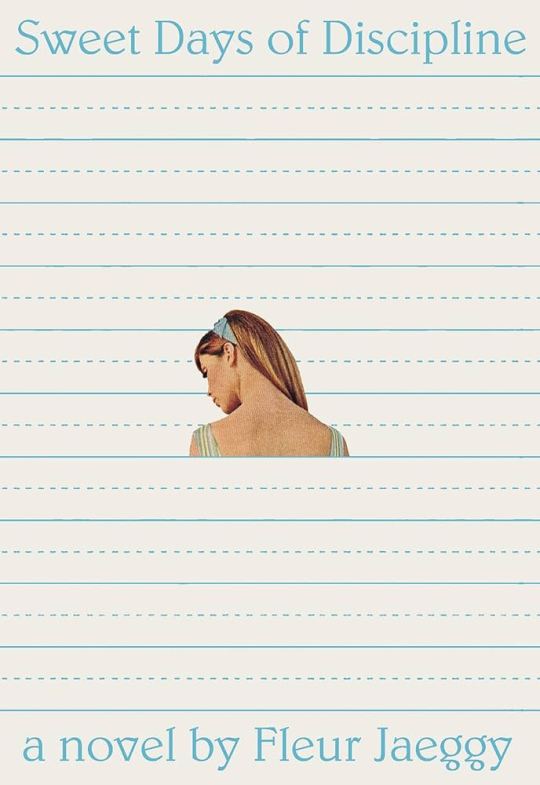
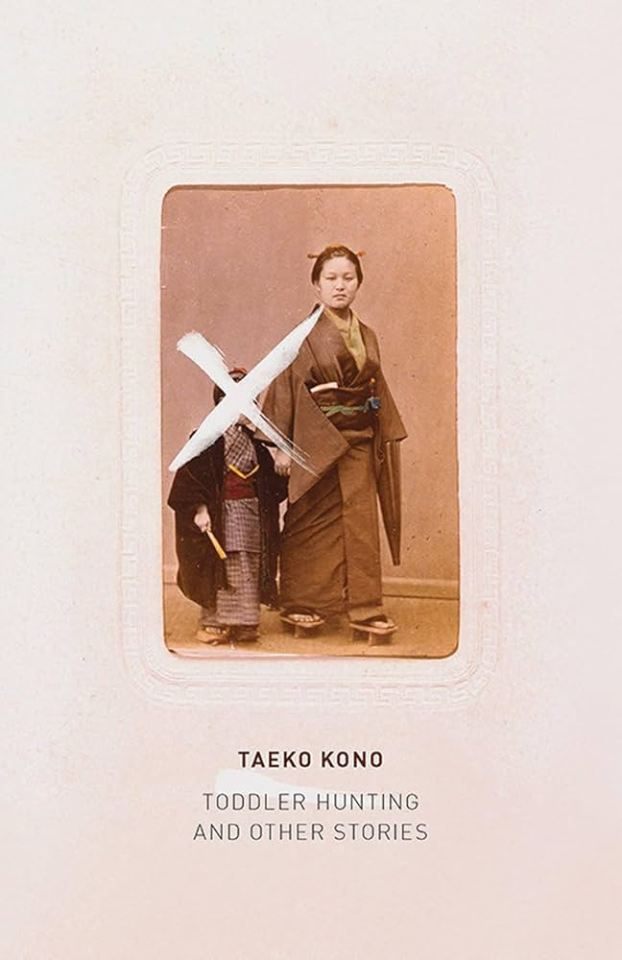
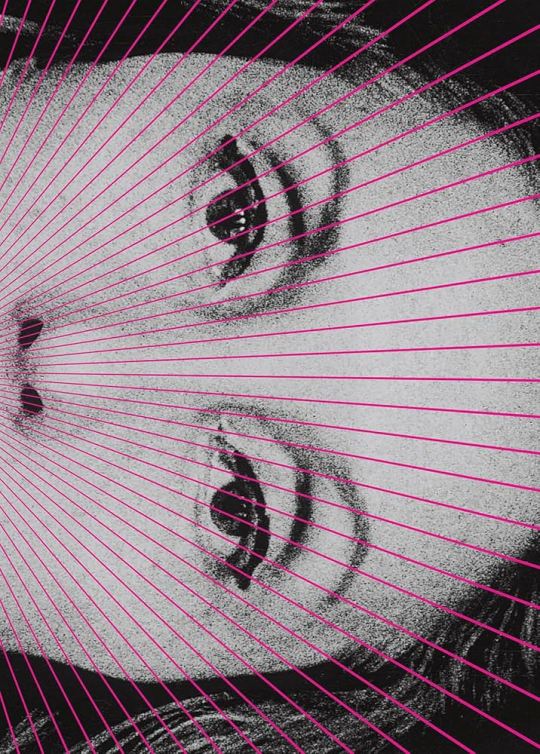
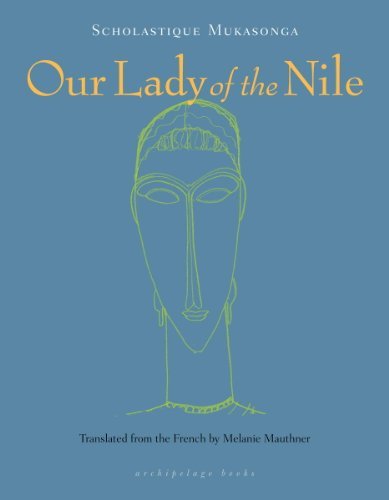

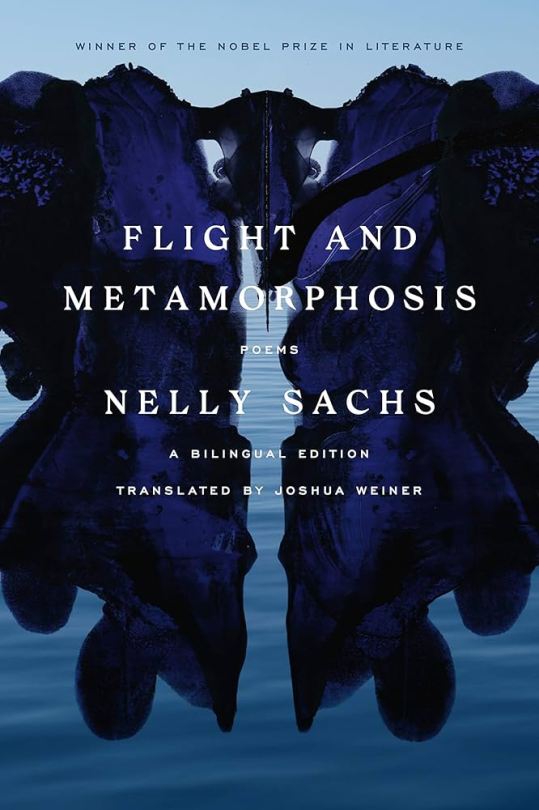

Hi friends! Inspired by @librarycards I wanted to make a post celebrating Women in Translation Month! Anglophone readers generally pay embarrassingly little attention to works in other languages, and that's even more true when it comes to literature by women, so I will jump at any chance to promote my faves 🥰 Here are some recs from 9 different languages! Also, I wrote this on my phone, so apologies for any typos or errors!
1. Trieste by Daša Drndić, trans. Ellen Elias-Bursać (Croatian): An all-time favorite. Much of Drndić's work interrogates the legacy of atrocities in Europe, particularly eastern Europe. Trieste is a haunting contemplative novel centered on an elderly Italian Jewish woman whose family converted to Catholicism during the Mussolini era and were complicit in the fascist violence surrounding them in order to protect themselves.
2. Cursed Bunny by Bora Chung, trans. Anton Hur (Korean): A collection of short stories that are difficult to classify by genre–speculative fiction in the broadest sense. The first story is about a monster in a woman's toilet, which sounds impossible to pull off in a serious, thought-provoking manner, but Chung does so easily—these are the kind of stories that are hard to explain the brilliance of secondhand.
3. Sweet Days of Discipline by Fleur Jaeggy, trans. Tim Parks (Italian; Jaeggy is Swiss): Another all time favorite! The cold, sterile homoerotic girls' boarding school novella of your dreams.
4. Toddler-Hunting and Other Stories by Taeko Kono, trans. Lucy North (Japanese): I think I read this in one sitting. Incredibly unsettling—these stories will stay with you. They often focus on the unspoken psychosexual fantasies underscoring mundane daily life.
5. The Complete Stories by Clarice Lispector, trans. Katrina Dodson (Brazilian Portuguese): I think Lispector is the best known writer here, so she might not need much of an introduction. But what a legend! And this collection is so diverse—it's fascinating to see the evolution of Lispector's work.
6. Our Lady of the Nile by Scholastique Mukasonga, trans. Melanie L. Mauthner (French; Mukasonga is Rwandan): Give her the Nobel! Mukasonga's books, at least the ones available in English, are generally quite short but so impactful. Our Lady of the Nile is a collection of interrelated short stories set at a Catholic girls' boarding school in Rwanda in the years before the Rwandan genocide. These stories are fascinating on many levels, but perhaps the most haunting element is seeing how ethnic hatred intensifies over time—none of these girls would consider themselves particularly hateful or prejudiced, but they easily justify atrocities in the end.
7. Extracting the Stone of Madness: Poems 1962-1972 by Alejandra Pizarnik, trans. Yvette Siegert (Spanish; Pizarnik was Argentinian): Does anyone remember when my url was @/pizarnikpdf... probably not but worth mentioning to emphasize how much I love her <3 Reading Pizarnik is so revelatory for me; she articulates things I didn't even realize I felt until I read her words.
8. Flight and Metamorphosis: Poems by Nelly Sachs, trans. Joshua Weiner (German): Sachs actually won the Nobel in the 1960s, so it's surprising that she's not better known in the Anglosphere. Her poems are cryptic and surreal, yet deeply evocative. Worth mentioning that this volume is bilingual, so you can read the original German too if you're interested.
9. Frontier by Can Xue, trans. Karen Gernant and Chen Zeping (Chinese): Can Xue is another difficult-to-classify writer in terms of genre. Her short stories are often very abstract and can be puzzling at first. I think Frontier is a great place to start with her because these stories are interconnected, which makes them a bit more accessible.
74 notes
·
View notes
Note
Heyyy!! Question, what was riding clothes for royal women like? I know skirt and bodice 2-pieces sort of clothing was mostly used. But like in fantasy, were breeches/pants/trousers ever popular in women's riding clothes? If so, do you happen to have any reference picture. Thank youu in advance. Have a lovely day.
I'm a little confused because... that is a very broad question. What Royal women? From what time period? From what country? From what fantasy world???
What I think you're trying to ask is if I know about historical clothing designed for riding animals (potentially horses?) that could help your research for a fantasy setting. (I also think you're asking about Europe based on the skirt-bodice description, so I'll answer mostly about that)

(Princess Lousie, Great Britain riding habit, late 1800s)
The most likely answer you are looking for is the riding habit. A riding specific outfit from Europe in the late 1700s-1800s. The Victorian ladies were getting more and more into hobbies like horse riding and their wardrobes changed to accommodate that.

(Queen Elizabeth ii in a royal riding costume)
Riding habits were gowns that were designed to maintain their modesty/fashion while they rode horses. This meant longer hemlines, and sometimes hidden pants. Looking at bicycle shorts/skirts from the Edwardian era might also help in designing or describing hidden pants.
(Obviously horses were ridden by women in Europe before the 1700s but there wasn't necessarily an associated outfit.)

(Catherine the Great riding side saddle)
A lot of older examples of women riding horses are "side-saddle", so they are able to wear their skirts and ride modestly. So if you're planning an older civilization riding horses but don't want chariot/palaquin/carriage the side-saddle is a good reference point. However if you're bringing up fantasy worlds to ride something non-horse sized, let's say a dragon, it could be too dangerous to ride side-saddle.

The weight-distribution and holding-on ability is very different to a regular saddle. I don't know about you but I wouldn't want to have one saddle loop keeping my seat on a flying dragon.
Generally I want to say that (European) Royal women didn't/don't wear pants to ride horses. At least not until women in general were wearing pants (fashionably), and even then... for official duties, processions, and the like... they still wore skirts. I think Princess Anne doesn't ride side-saddle for some occasions, but Princess Anne is also often wearing her military uniform for such things.
I think if you are looking for historical women wearing trousers to ride horses the majority of references I can think of aren't from Europe. For example in West Asia we have horse-riding women, figures like Mulan, female samurai who rode horses, etc, etc.

(Nellie Brown, you can see the buttons on the front of her skirt. Think of it like a skort with modesty buttons)
TLDR: Most women wore some sort of skirt (sometimes with hidden pants, buttons to make the skirt open and close for more range of movement and modesty, longer hemlines or extra fullness to accommodate the horse in their modesty, etc.) until it was fashionable for women in general in their society to wear pants.
#answered#ramblings#riding habits#riding outfits are fascinating#i tried my best#always double check with your own research#i am not a real historian#best of luck with whatever you are working on#fashion history
59 notes
·
View notes
Note
hi hi, i am looking for female Egyptian faceclaims 21 and over. Maybe actresses that have starred in series revolving around supernatural creatures.
May Calamawy (1986) Jordanian, Palestinian / Egyptian - in Moon Knight.
Haifa Wehbe (1972) Egyptian / Lebanese - her role in Renegades of Europe and Aswad Fateh might work because they're action - has spoken up for Palestine!
Nelly Karim (1974) Egyptian / Russian - her role in Rose & Layla might work because it's action - has spoken up for Palestine!
Yasmine Al Massri (1978) Egyptian / Palestinian - her role in Quantico might work because it's action!
Athena Karkanis (1981) Greek and Egyptian - in Manifest.
Enjy Kiwan (1984) Egyptian - had a small part in Paradox Effect - has spoken up for Palestine!
Sonja Kinski (1986) Egyptian / White.
Rosaline Elbay (1990) Egyptian - has spoken up for Palestine!
Salma Abu-Deif (1993) Egyptian.
Huda Elmufti (1994) Egyptian - has spoken up for Palestine!
Mayan El Sayed (1997) Egyptian - has spoken up for Palestine!
A gentle reminder to please use manners when requesting things from helpers - I hope these suggestions help you!
10 notes
·
View notes
Text
and is the train that’s departing in the station with us now?
12 notes
·
View notes
Text
Marx and Mathematics
“Engels knew nothing, Marx at least knew a little bit”
The historian of science Annette Vogt explains how and why the founders of scientific socialism engaged with mathematics
Interview by Nelli Tügel:
originally published in German in ak 688, 13 December 2022
In order to better understand capitalism, Karl Marx taught himself parts of algebra and calculus. Nevertheless, he was not a mathematical genius. The historian of science and mathematician Annette Vogt explains why the editorial history of Marx’s mathematical manuscripts resembles a detective novel, and how he used math to deal with personal crises.
Professor Vogt, is it true that Karl Marx made numerous mathematical errors in Capital?
Annette Vogt: That’s true, there are all kinds of calculation errors. But that’s human. And Marx was also just a human being.
Only a few people know that Marx left behind mathematical manuscripts numbering almost 1000 pages. Why did he engage with mathematics at all?
One reason was that he wanted to predict economic crises; in the case of the first one, he was rather euphoric that capitalism was now collapsing. He then asked himself: are they regular, for example every five or ten years or – as is actually the case – irregular. Marx was friends with the chemist Carl Schorlemmer, who told him that it might be possible with the aid of calculus – more specifically, with differential calculus – to calculate when the next crisis would come. When Marx attended Gymnasium in Germany, differential and integral calculus were not yet part of the curriculum, that was first the case after 1900. So he had no knowledge of it and did what a scientist does…
Pick up a book first?
Exactly. He went to the library and sought out books that he could learn it from. However, as the Dutch-American historian of mathematics Dirk Struik, who was one of the first to write about the manuscripts, accurately put it: for studying capitalism, Marx was in the right country, England; for studying mathematics, he was in the wrong one. He wasn’t familiar with the newest mathematical literature on calculus, because it was all from continental Europe and was not yet available in England. So he studied the textbooks that were available to him. The mathematical manuscripts consisted largely of excerpts that he created on the basis of his readings, and his notes on them. That’s how Marx taught himself differential calculus.
Were there further reasons for his engagement with mathematics?
Yes. A further reason was – and I understand it quite well, as a mathematician – that it helped him through personal crises. We know this from letters to Engels: when one of his children died young, he did arithmetic in order to distract himself. That might sound incredible to people who are afraid of mathematics, but of course this way of keeping busy can help somebody not to grieve all the time.
What other areas of mathematics did Marx devote himself to?
He also did a little bit of algebra. Algebra consists of equations, from the most simple 2+2=4 to abstract equations up to those – think of the Pythagorean theorem – that can be illustrated geometrically.
That simply had to do with the fact that there are equations in economics.
So his interest was largely pragmatic?
There are two interpretations regarding Marx and mathematics. One – the hagiographic one, making him into a pillar saint – is that Marx was such a universal genius, that he was also a mathematical genius. That’s simply wrong. The other one is: he was a scientist, and as such, he appropriated knowledge that he needed via self-study. He also wrote geological excerpt notebooks – but luckily, it never occurs to a geologist to claim that Marx was a great geologist. (laughs)
With regard to the editorial history of the excerpt notebooks, the hagiographical element plays a role, however: those who wanted to publish the mathematical manuscripts were disappointed by their content.
Because they didn’t find in them the genius they were hoping for?
Exactly. However, his notes are nonetheless significant, simply because they show us the areas he was concerned with, and because they help us to understand and reconstruct his thought. However, Marx can be a role model for everyone who is afraid of math: there’s no reason for that, anyone can learn it.
In your entry on the manuscripts in the Historisch-kritisches Wörterbuch des Marxismus, you write: “his notes on the history of ‘infintesimal calculus’, that is, of differential and integral calculus, have a charm of their own.” What did he write?
He studied textbooks – for example those of the French mathematicians Lagrange or Cauchy – and attempted to understand what the crux of differential calculus is. One can actually see this quite nicely when looking at its historical development and asking why which thing was done at what time. For example that it started with physics, because people wanted to calculate the speed of something. Well, that’s exactly what Marx did, he chose a historical approach, and asked: why does Lagrange take this step, why does he examine that function, why didn’t somebody else do that – these notes are simply interesting for historians of mathematics. He did that completely correctly, he understood the core of the matter.
What do you know about the period of time in which he concerned himself with that?
There were three phases in which notes were made, each in the British Museum Library. Using the borrowing slips, it was exactly reconstructed when he read which books there, that’s how we know he wasn’t familiar with the most modern literature. He knew French, that helped him to read Lagrange and Cauchy in the original.
To what extend did his concern with mathematics have an influence on Engels’ work?
While Engels was writing Dialectics of Nature, Marx – we know this from letters – had told him a bit about the history of mathematics. I suspect that Engels for that reason also therefore thought that Marx was a talented mathematician, since Engels didn’t know anything about math and Marx at least knew a little bit. Thanks are due to Engels for the fact that the mathematical manuscripts were preserved after Marx’s death. He considered them important. Marx never intended to publish them; they were working material.
Even today, the manuscripts are – despite Engels’ intention – only partially published. Why?
After the victory of the October Revolution, the Marx-Engels-Institut was founded in Moscow, later the Marx-Engels-Lenin-Institut, and charged with the task of publishing a Marx-Engels-Gesamtausgabe, the MEGA I. The father of this edition was David Borisovich Ryazanov, who later became, along with many other members of the Institut, a victim of Stalin’s persecution. The project of the MEGA I was interrupted. After 1945, the MEGA II began publication, later the project of MEGA III was begun with the participation of the Berlin-Brandenburg Academy of Sciences and Humanities, the International Institute of Social History Amsterdam, and collaborators from Moscow. It is not yet completed, and within the framework of MEGA III, the mathematical manuscripts are also supposed to be published completely.
However, there is a volume with part of the manuscripts: in 1968 a special edition was published, which until today is the basis for all engagement with the manuscripts, including the English and French translations and the – strongly abridged – German edition.
Who was responsible for this edition?
It goes back to work by the mathematician and specialist for logic, Sofia Yanovskaya, and Konstantin Rybnikov, who was a professor of history of mathematics at Lomosonov University in Moscow. However, they “forgot to mention” – in scare quotes – the work of Ernst Kolman, a Czech-Soviet Comintern functionary who lectured and published articles on the mathematical manuscripts at international conferences from 1932 on. In 1968, he distanced himself from Soviet leadership due to the Prague Spring, that’s why he isn’t named in Yanovskaya and Rybnikov’s edition. When I first dealt with this in the 1980s and noticed it, I thought: that’s really unfair.
And it is!
Yes. But here’s the exciting part. I then found out: Kolman himself had deliberately covered up who had been the person commissioned by Riazanov in the 1920s to prepare the mathematical manuscripts for publication in the MEGA I: the mathematician and political author Emil Julius Gumbel. Gumbel was a co-founder of the modern statistics of extreme values, which are used to calculate extreme events, such as the Corona pandemic. Gumble had basically finished editing the manuscripts, at the end of the 1920s he read the galley proofs, but the publication never happened: work on the MEGA fell victim to the repression under Stalin. Gumbel was later driven from Germany by the Nazis; he worked in Paris and Lyon, and later in American exile.
You see, in a certain way it’s tragic: over the decades, almost a hundred years, a few people have already worked on the editing of these mathematical manuscripts, and many sad stories are involved. If I were a writer of crime novels, I’d write a book about it and call it “The Curse of the Manuscripts.”
Annette Vogt has a degree in mathematics and a doctorate in the history of mathematics. From 1994 to 2018, she was a research scholar at the Max-Planck-Institut für Wissenschaftsgeschichte. Since 1997 she has taught at the Humboldt University in Berlin, and since 2014 she has been an honorary professor of the economics faculty of the HU. Among other things, she is co-author of a traveling exhibition on the life and work of Emil J. Gumbels.
Nelli Tügel is an editor at ak.
127 notes
·
View notes
Text


Martha Issová in
The Seven Ravens (Sedmero krkavců)
2015, dir. Alice Nellis IMDB
#Czech#čumblr#Czech cinema#Czech film#The Seven Ravens#Sedmero krkavců#Alice Nellis#Božena Němcová#film#film edit#fantasy#comedy#fairy tale#2010s#adaptation#Czech literature#central Europe#european cinema#european film#actress#psychotronic film#Czech Republic#Czechia#Czech pop culture#gif
25 notes
·
View notes
Note
recs (he or contemp) where the hero just assumes the worst about the heroine? Kind of like those trashy harlequins where dude thinks heroines the absolute worst the biggest brat in the universe but he ends up being so wonderfully wrong?
I mean, the big obvious one off the top of my head is It Happened One Autumn by Lisa Kleypas. Westcliff never likes Lillian. Like, even when you read Secrets of a Summer Night, he thinks this girl is TRASH. Mostly because he wants to dive into that trash like a raccoon.
When the Duke Loved Me by Lydia Lloyd has a great setup there. The hero and heroine had this great makeout when they were both in disguise at this party years before, but it's interrupted by his friends who are like "NOOOOO STOOOOOP" because she's actually from this family that is mortal enemies with his family, particularly because her aunt and his dad hooked up years ago and caused SCANDAL AND RUINATION. So the hero, who is hideously attracted to her, thinks she's similar and is just out to get him. Her opinion of him is... not much higher.
A Secret Love by Stephanie Laurens has an interesting variation on this. The hero and heroine really dislike each other, and he has just no real rationale for it because they grew up together (the actual rationale: she got hot as they grew up and he sublimated this development into hatred). However, because of his Special Skills of Financial Investigation (all Cynster dudes have Special Skills, just go with it) the heroine puts on a veil, pretends to be a widow, and enlists him to help her. And he lOOOOVES her as a widow.
In Which Matilda Halifax Learns the Value of Restraint by Alexandra Vasti has the hero think the heroine is painted HUSSY because she drew dirty pictures of him... but he's also into it and just can't admit it. In Which Winnie Halifax is Utterly Ruined also has the hero develop an initially bad impression of her. Mostly because she's pretending to be his wife.
The Duke Gets Desperate by Diana Quincy has a hero who haaaates the American heroine because she's basically inherited his castle and is like "you are art historian and dumb with money, we are going to offer paid tours of this castle to financially justify its existence" and he's like *SCANDALIZED GASP*. It's very funny.
The Duke Gets Even by Joanna Shupe, of course, has Lockwood absolutely despise Nellie after their initial oceanic makeout. Mostly because, in his defense, she's constantly coming in to ruin his attempts at securing a sugar mama. The "you'll NEVER MARRY MY FRIEND"/"well guess what??? that just ensures I'll marry her EVEN HARDER" exchange lives rent-free in my brain.
Never Seduce a Duke by Vivienne Lorret features a hero who thinks the heroine stole his magical Arthurian cookbook, leading to him pursuing her across Europe for JUSTICE!!! (not only for justice)
Once More, My Darling Rogue by Lorraine Heath is a retelling of the Kurt Russell/Goldie Hawn classic overboard, in which the hero hates the bratty, bitchy heroine so much (with good reason lol) when he rescues her from a river and realizes she has amnesia, he literally just tells her she's his housekeeper as revenge. I mean, it's supposed to be a BIT and it goes on much longer than he expected. But he DOES make her wash his back, and that DID make me laugh a lot. TW: discussions of childhood sexual abuse.
Wicked in His Arms by Stacy Reid has a cold, uptight earl (?) who hates the heroine on sight because he thinks she's, again, a hussy. He's such a dick to her. This is also the one, however, where he deflowers her impetuously in a closet and then chases her when she runs like, crying into the hallway, and then they run into his mom and everyone is like "well. this situation is extremely obvious" so bOOM MARRIED.
After Dark with The Duke by Julie Anne Long has the older, dignified, war hero duke hate the younger, seemingly-flighty opera singer heroine because she's a scandalous woman who recently came off of two men fighting a duel over here. It's not classy!!!! Then he's mean to her and the owners of the boarding house where they're staying force him to teach her Italian in apology. And. He realizes things.
Married by Morning by Lisa Kleypas, of course, is building off the frankly irrational mutual hatred Leo Hathaway and Catherine Marks have had for each other ever since she entered the scene in Seduce Me at Sunrise. Tbh, the preceding books are good and worth reading (especially Seduce, one of my favorite Kleypases) but it's also just so fun to read Leo being like "I hate Marks so much, she's such a killjoy, I shall sketch her wearing nothing simply because".
Sweetest Scoundrel by Elizabeth Hoyts (a top Maiden Lane for me) has Asa and Eve just kind of hate each other because she's soooo proper, and he's soooo note, and it's actually really lovely to see him realize why she is the way he is, and melt because he's so empathetic, actually, and A DEEPLY GOOD MAN. ASA MAKEPEACE. UGH. I just love that both Makepeace heroes are God Tier.
Between the Devil and Desire by Lorraine Heath, of course, has Jack Dodger be like "Olivia is so cold and so uptight and has such a giant stick up her ass" and over time he realizes she's actually a delightfully zany freak.
The Worst Guy by Kate Canterbary, of course, stars surgeons who really just severely dislike each other in a very childish way that I somehow found incredibly hilarious. He thinks she's the WORST, and he's honestly wrong about a lot of things... then they're forced to go through work counseling, basically, which leads to them casually taking their anger out on each other through hookups.
You, Again by Kate Goldbeck. It's a retelling of When Harry Met Sally, basically--and to be fair, the hero has his reasons lol. Because the heroine is hooking up with the girl he's trying to date seriously in the beginning. BUT IN HER DEFENSE!!! The relationship wasn't serious at that point. Anyway, over the years of course they become friends... with sizzling tension the whole time.
Pride and Protest by Nikki Payne is a Pride and Prejudice retelling wherein this billionaire meets a woman protesting against his company, and he initially thinks she's basically a poser, but gradually he realizes she's the real deal... and naturally becomes obsessed.
Managed by Kristen Callihan has the hero just hate the heroine... somewhat understandable reasons, tbh. But there's more to her than what meets the eye! He's this very strait-laced manager of a rock band, and he hires her to be the photographer/social media manager.. But he also has insomnia and can't sleep WITHOUT HER IN THE BED LOL.
Eyes on Me by Sara Cate has the hero dislike the heroine because she's his annoying stepsister! That's all. But then she turns out to be into camming, and oops he ends up watching, and it kinds spirals from there.
American Royalty by Tracey Livesay features a stuffy British prince assigned to the task of putting on this big charity concert... Which leads to him pulling in this popular American rapper. There's a lot of clashing because she's confident and doesn't take any shit from him, and of course he's doing some attraction sublimation. It also has a direct sequel, The Duchess Effect, which is similarly so good!
Act Your Age, Eve Brown by Talia Hibbert features leads who are both on the spectrum, which is great. She's trying to become more independent, so she ends up working at this B&B he runs. But she also like, lowkey hits him with her car. And is kind of wild and off the wall. And he can't stand her. YET...
#romance novels#romance novel blogging#book recs#historical romance#regency romance#victorian romance#contemporary romance
15 notes
·
View notes
Text
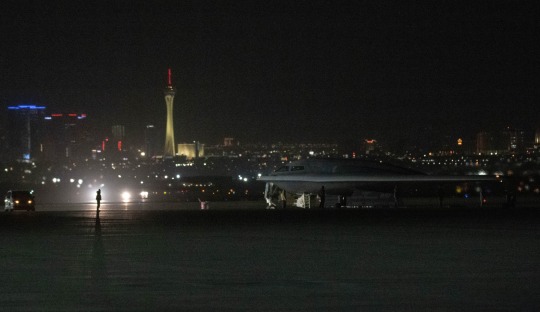
IMAGES: B-2 bombers return to the Red Flag, accompanied by Australian F-35s and RAF Typhoons
Australian F-35A fighters participate for the first time in the Red Flag at Nellis Air Base in Nevada.
Fernando Valduga By Fernando Valduga 01/16/2024 - 23:19in Military, Military Operations, Red Flag
Three B-2 Spirit bombers returned for the first Red Flag exercise of 2024 at Nellis Air Base, Nevada, this week, alongside the Eurofighters Typhoon of the British Royal Air Force (RAF) and the F-35A of the Royal Australian Air Force (RAAF).
More than 30 units and 2,000 military personnel participate in air combat training, considered by the participating allies as one of the "most advanced" and "most difficult" training opportunities in the world.

Three B-2 Spirit stealth bombers arrive for Red Flag 24-1 at Nellis Air Base, Nevada, January 11, 2024. (Photo: U.S. Air Force / Senior Airman Bryson Britt)
The exercise began on January 15 and will incorporate realistic and sophisticated combat scenarios until January 26.

The B-2 Spirits will focus on increasing interoperability, training against scenarios involving a contested, degraded and operationally limited environment, said 2ª Ten Lindsey A. Weichel from the 509ª Bomber Wing.
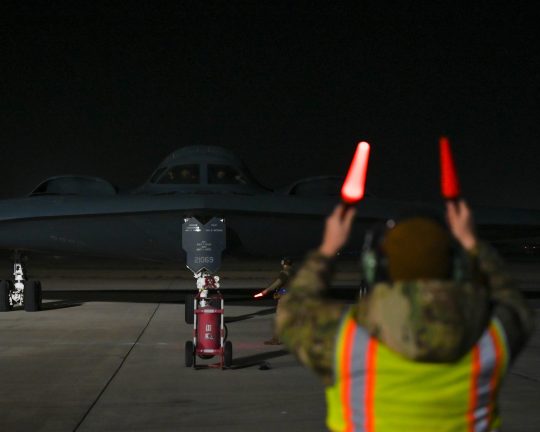
The stealth bombers, usually a regular presence on the Red Flag in recent years, did not fly in the first edition of last year's Red Flag due to a safety impasse - although the exercise virtually simulated the aircraft and crew members participated. The B-2 finally returned to the Red Flag-Alaska 23-3, flying deep into the Arctic Circle in August 2023.
This Red Flag 24-1 exercise in Nellis will also involve:
USAF F-35 Lightning II
USAF F-22 Raptors
RAF FGR-4 Typhoons
RAAF F-35As
EA-18G U.S. Navy Growlers

Six Royal Air Force FGR-4 Typhoons prepare to land for Red Flag-Nellis 24-1 at Nellis Air Base, Nevada, January 10, 2024. (Photo: U.S. Air Force / William R. Lewis)
"Training prioritizes first-time combat missions, mission commander updates, integration and signaling of unique experiences that most contribute to readiness and partnership," Colonel Eric Winterbottom, commander of the 414º Combat Training Squadron, said in a statement.

He added that this training is vital for aviators to operate independently to strengthen the resilience and survivability of the mission.

A Royal Air Force Typhoon FGR-4 lands at Nellis Air Base, Nevada, on January 10, 2024, in preparation for the Red Flag-Nellis 24-1. (Photo: U.S. Air Force / William R. Lewis)
Almost 100 aircraft depart from the base twice a day, some of them remaining in the air for up to five hours. The training will see night launches to also simulate night combat operations.
This iteration also marks the first participation of Australian F-35As since RAAF joined the exercise since 1980.

An Australian Royal Air Force F-35A lands at Nellis Air Base, Nevada, on January 10, 2024, in preparation for the Red Flag-Nellis 24-1. (Photo: U.S. Air Force / William R. Lewis
"The Red Flag Nellis exercise will test all facets of our F-35A capability, allow us to integrate with our American and British allies and practice how we project force in combat operations." Wing Commander Adrian Kiely, Commander of Squadron Nº 3 of the RAAF, said in a statement.

Founded in 1975, the Red Flag was initially designed to intensively train U.S. Air Force pilots on air combat missions, drawing lessons from the Vietnam War. With the Pentagon focusing on China, the exercise changed to expand over the Pacific.

A U.S. Navy EA-18G Growler designated for Whidbey Island Naval Air Station, Washington, arrives for Red Flag-Nellis 24-1 at Nellis Air Base, Nevada, on January 10, 2024. (Photo: U.S. Air Force / William R. Lewis)
This year's edition is aligned with the 2022 National Defense Strategy and focuses on deterring aggression, addressing the challenges in the Indo-Pacific and Europe, and building a joint force.
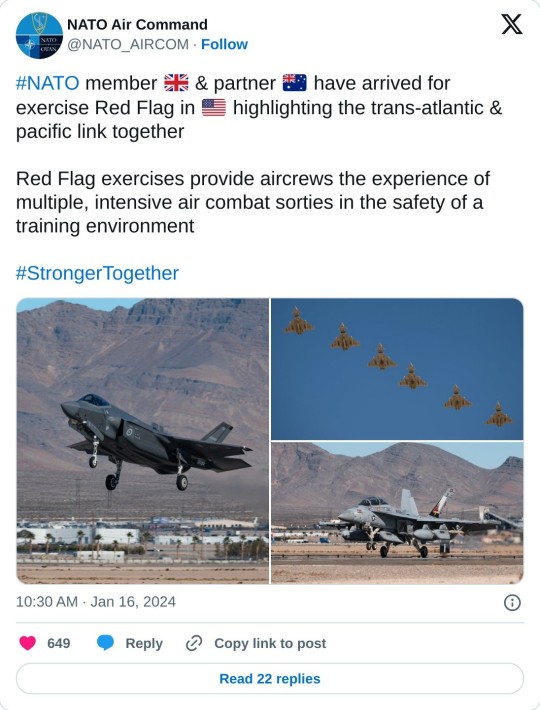
There are usually three Red Flag exercises per year: a U.S.-only session, one open to Five Eyes nations (UK, Australia, Canada and New Zealand) and another that includes a broader list of global allies.
Source: Air & Space Forces Magazine - Edition: Cavok
Tags: Military AviationB-2 SpiritEurofighter TyphoonF-35 Lightning IIRAAF - Royal Australian Air Force/Royal Australian Air ForceRAF - Royal Air Force/Royal Air ForceRed FlagUSAF - United States Air Force / U.S. Air Force
Sharing
tweet
Fernando Valduga
Fernando Valduga
Aviation photographer and pilot since 1992, he has participated in several events and air operations, such as Cruzex, AirVenture, Dayton Airshow and FIDAE. He has works published in specialized aviation magazines in Brazil and abroad. He uses Canon equipment during his photographic work in the world of aviation.
Related news
MILITARY
IMAGES: Ethiopia presents its Su-30 fighters and Akinci combat drones
18/01/2024 - 17:44
During a training event, a Hungarian JAS39 Gripen fighter simulates an interception of a Falcon jet from the Slovenian government.
MILITARY
Slovenia's air guardians have been integrated into NATO's defensive structures for 20 years
18/01/2024 - 15:00
MILITARY
GA-ASI demonstrates autonomy for UCAVs using MQ-20 and Waveform X
18/01/2024 - 14:00
AERONAUTICAL ACCIDENTS
VIDEO: Russian military helicopter makes emergency landing on highway
18/01/2024 - 11:00
MILITARY
Pakistani JF-17 jets bomb "terrorist" targets in Iran
18/01/2024 - 08:16
BRAZILIAN AIR FORCE
FAB: Aeromedical Evacuation Mission brings hope from the Andes to Brazil
18/01/2024 - 08:00
9 notes
·
View notes